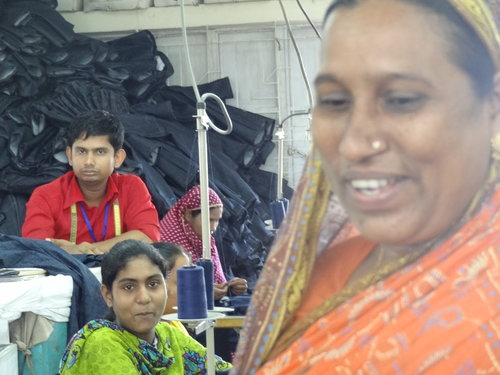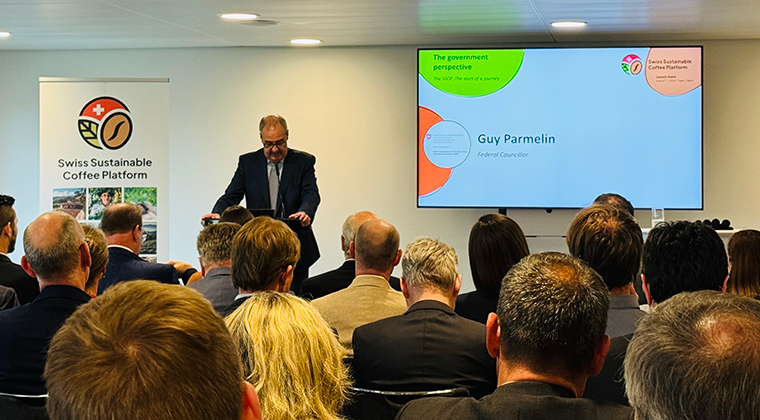NYU Stern Center for Business and Human Rights second response on its Bangladesh research to the Penn State Center for Global Workers Rights and associated scholars

February 26, 2016
Dear Professors Fine, Bartley, Evans, Luce, McCartin, Kalmanovitz, and Tilly,
Thank you for your letter regarding our Bangladesh research. It is heartening to know that so many of us care deeply about improving workers’ rights in the global supply chain, whatever our differences on how to achieve this goal. We are confident that there are a much wider range of areas on which we agree, and are eager to explore ways to work with you and your colleagues to advance expanded protections for workers across the full scope of the apparel supply chain.
Our most recent research on the true size and scope of the apparel supply chain points to the urgent need for renewed public attention and added resources to address the unfinished workers’ rights agenda in Bangladesh. As scholars in this area refine our collective understanding of the supply chain, an essential and unresolved question is who will pay for factory repairs when safety lapses are identified. We all know that these costs will be substantial, and should redouble our efforts to secure adequate resources.
Responding specifically to your critique of our research, we underscore that our assessment rests on three levels of analysis. First, we developed a conceptual framework for looking at the industry, rooted in an understanding of the dynamics of direct and indirect suppliers, official and unofficial subcontractors, the fluid boundaries between different levels of the sector, and the financial incentives at play. Second, we applied a series of methodologies to enhance our understanding of this framework, including a large-scale data analysis, two-part field study, and a factory map and data visualization. Third, we populated the framework with the best data available to us and other researchers. We hope to generate discussion and further research at all levels of this analysis.
You raise a number of issues that merit further attention, which we reflect on in detail below. We are very interested in engaging with others doing original research in this area, in Bangladesh and other key garment producing countries. Increased transparency about the apparel supply chain will better inform researchers, consumers, companies, and governments. Most importantly, we think increased transparency will help workers at all levels of the chain. We see an urgent need for creative thinking about the solutions that will be required to meet the challenges of a more complex and distributed supply chain.
Thank you for your interest. We would welcome the opportunity to meet with you in person.
Sincerely,
Sarah Labowitz Dorothée Baumann-Pauly
Co-Director and Research Scholar Research Director
APPENDIX: QUESTIONS RAISED BY THE PENN STATE CENTER FOR GLOBAL WORKERS’ RIGHTS AND ASSOCIATED SCHOLARS, WITH ADDITIONAL QUESTIONS FOR FURTHER RESEARCH:
We are interested in hearing your views on these questions, as well as other issues you believe should be on our research agenda.
- How reliable is the data? What should be done about errors in data entry? We undertook the data analysis with two premises: First, that the availability of five factory lists presented an almost unprecedented opportunity to examine the garment sector at a national level without relying exclusively on foreign brands to define the supply chain. And second, that it would be difficult to work with the data.
The Penn State critique identifies potential errors in employment data entry in four factories out of 7,100. We did not edit the data that we scraped from the five source lists, but did combine records in the process of de-duplication. As we created the comprehensive dataset, we made a judgment that we would not seek to correct even obvious errors in data entry (such as the inclusion of the factories in Rana Plaza). Recognizing the limits of our own knowledge and capacity to verify each of the 7,100 entries, we decided to present the data as-is. As we note throughout the report, the data is over-inclusive of factories and workers, which is the focus of the Penn State critique. But we also knew that it was under-inclusive of factories that are not registered with one of the five data-supplying entities. Is it possible to develop a verified list of factories at the national level? Can incentives be created to encourage unregistered factories to register with an official entity and be counted?
- Should the trade associations be included in a dataset of factories? The Penn State critique advances the theory that many factories that appear on the trade associations’ lists are out of operation, and therefore these lists should be excluded from the dataset. Our research points to other alternatives. The BGMEA and BKMEA (the two trade associations) factory lists contain important information about official subcontractors.
Official subcontractors are an important player. These factories are members of the trade associations, but do not export directly (they are not on the “UD” list of exporters). They have some measure of oversight because the trade associations track orders between official subcontractors and direct exporters. BGMEA authorizes this kind of subcontracting through an “interbond transfer license,” which we examined in our 2014 report, “Business as Usual is Not an Option: Supply Chains and Sourcing after Rana Plaza.” Existing efforts at safety improvement focus on the approximately 3,200 factories on the “UD list” (direct exporters), but do not cover official or unofficial subcontractors (indirect exporters).
What is the best method for counting official subcontractors? What does it mean for supply chain transparency that factories often do a mix of direct and indirect production? Does the current understanding of supply chain “tiers” commonly referenced by brands adequately represent the reality of a mix of direct and indirect suppliers, and official and unofficial subcontractors? How should scholars account for official subcontractors if the trade association data is excluded?
- Can factories that produce for the domestic market be walled off from the export market? Many observers and participants in the garment sector argue that domestic production is wholly separate from export production. We tested this hypothesis in a June 2015 field study in two sub-districts of Dhaka. It showed that 91% of subcontracting factories in the survey produce at least partly for export. This indicates that the boundaries between domestic and export production are fluid. Understandably, factory owners seek to fill their production lines with the most valuable orders available to them, which is usually a mix of domestic orders and export subcontracts.
The Penn State critique asserts that there are a large number of domestic market-only factories included in the DIFE database. We do not see a basis for this given what we know about the fluid boundaries between domestic and export production. Our data suggests that only about 9% of factories in the two sub-districts we surveyed produce exclusively for the domestic market. Workers producing for the domestic market also are entitled to rights protections, and we would welcome further study of the conditions in these factories. Building on the surveys conducted by our Center and BRAC University in 2015, both of which identify a widespread practice of subcontracting for the export market, how should scholars gather data about unofficial subcontracting factories? What role can foreign brands play in legitimizing an honest discussion of subcontracting to help encourage openness about the practice in a way that leads to more expansive protections for workers?
- What is the appropriate methodology for de-duplicating complex data? Our initial scraping of the five factory lists resulted in a dataset of more than 11,000 factory records. We struggled with how to address duplication across lists and experimented with a number of methodologies. Initially, we attempted to use machine-based coding to identify and eliminate duplicates, but the data proved too complex. We determined that human judgment would be required to reliably identify duplicates and recruited a team of Stern MBAs to carry out the de-duplication during summer 2015. We trained them according to a consistent methodology, which is described in the “Beyond the Tip of the Iceberg” report. It is not clear what methodology the Penn State and Colorado researchers applied in making assertions about the quality of our de-duplication efforts, including how they made judgments about issues such as factory groups, where multiple factories with similar names conduct different production activities at similar addresses.
Note that BRAC University Business School in Dhaka conducted a very similar exercise, which resulted in a cleaned up factory list of approximately the same size (we understand that their list contains about 8,000 records). We would welcome other scholars’ recommendations of how to refine the de-duplication methodology, keeping in mind the challenges of differentiating co-located factories and factory groups.
- What percentage of workers and factories do the Accord and the Alliance cover? Our research concludes that together, the Accord and Alliance cover about 27% of factories and about half the workers in Bangladesh. The Accord and the Alliance represent important first steps in organizing collective efforts among many global brands and, in the case of the Accord, global unions. But these efforts are limited to inspections and capacity building on fire safety, and neither goes far enough in resolving the issue of who pays for the repairs identified through their inspection programs.
The Penn State critique includes a table that asserts that our analysis missed 300 Accord factories. The Accord and Alliance factory lists in our analysis (October/November 2014) included 1,852 factories. As of February 2016, they included 1,856 factories. Our analysis is consistent with the Accord and Alliance’s own reporting.
Additional questions that we are interested in exploring with other scholars:
- How much money is actually being directed toward factory repairs in Bangladesh? Our research identifies significant announcements of commitments for the garment sector in Bangladesh, totaling more than $280 million. Rubana Huq, a respected factory owner in Dhaka, notes that most of this money is being spent on audits, compensation for victims of Rana Plaza, and one-off projects. She asks, “Has anyone even studied in detail how little or nothing has reached the manufacturers?” This is a valid question and one that merits further study.
- Why are factories not being fixed? According the Accord and Alliance’s own reporting, remediation of factory safety issues is proceeding very slowly in the relatively well-resourced factories supplying their member brands. While the government (with the support of the ILO) has made progress in inspecting factories under the purview of the National Action Plan, these are factories that do not directly supply high profile North American and European brands and have even fewer resources to make repairs. As we identified in our 2014 report, one of the impediments to improvement in factory and worker safety in both the Accord and the Alliance is pushing responsibility for fixing factories onto factory owners. The reality is that foreign brands and consumers in North America and Europe have benefited greatly from low prices that do not take into account the full cost of producing in compliance with minimum standards. We have advocated an alternative approach that proposes to share responsibility for the extraordinary costs of making factory repairs, as well as increasing oversight and transparency across the full supply chain in Bangladesh. To be sure, factory owners bear significant responsibility for some of these costs, but the brands, governments, financial institutions, and philanthropies also have an important role to play. It is important now to develop and gain broad acceptance for the right funding formula.
- What kinds of solutions should be applied to indirect sourcing factories? Small factories at the bottom of the supply chain have a very different set of needs than the largest factories at the top of the sector. It is not realistic to expect that a factory employing 100 workers in a rented building will install a $150,000 sprinkler system or an international-standard, imported fire door. But all workers, regardless of where the garments they produce are sold, are entitled to protections at work. What should the standard be in these factories? Who will provide the resources and oversight to ensure that workers in all factories are protected?
 Global Labor
Global Labor


